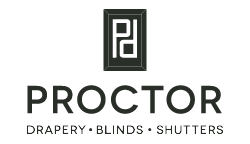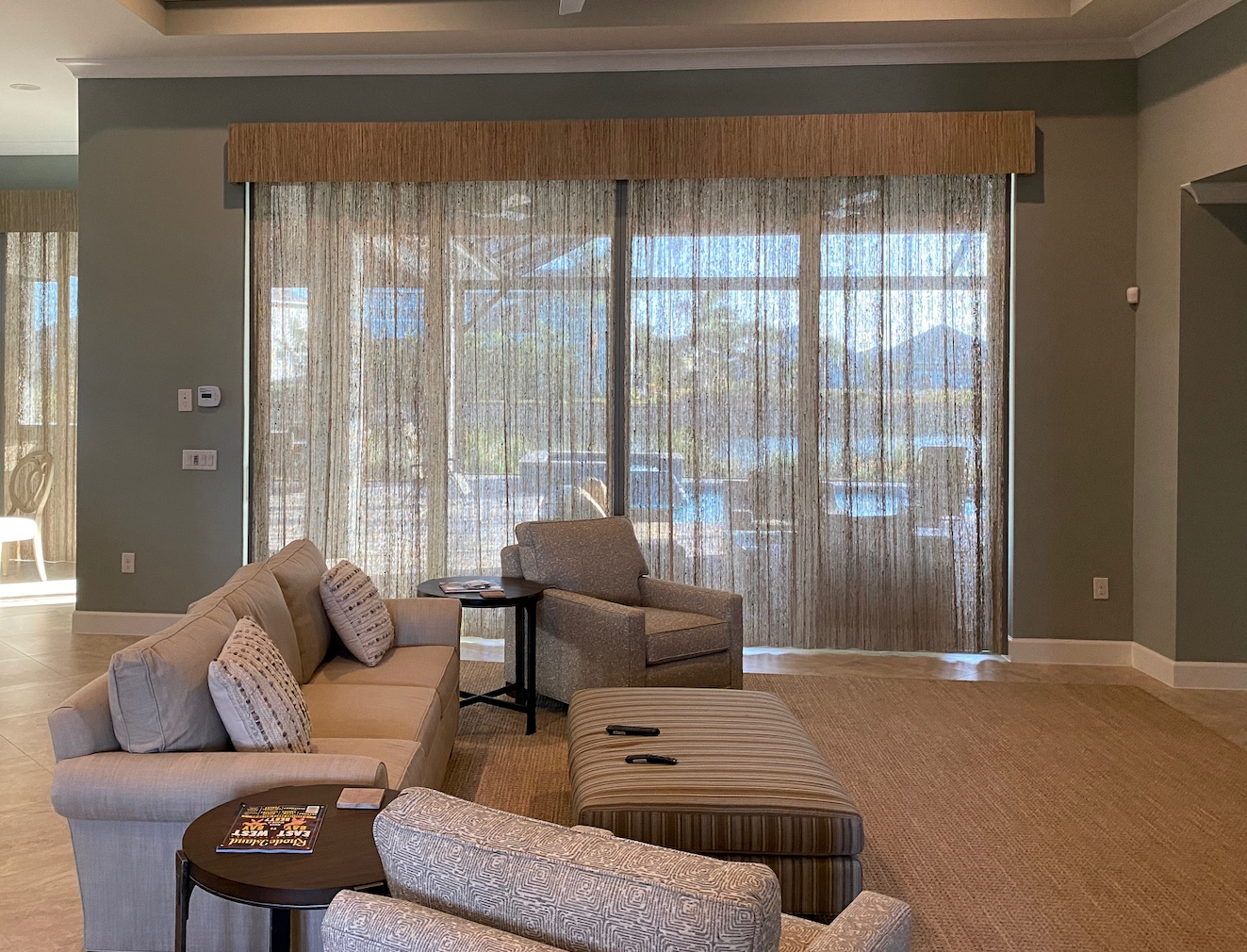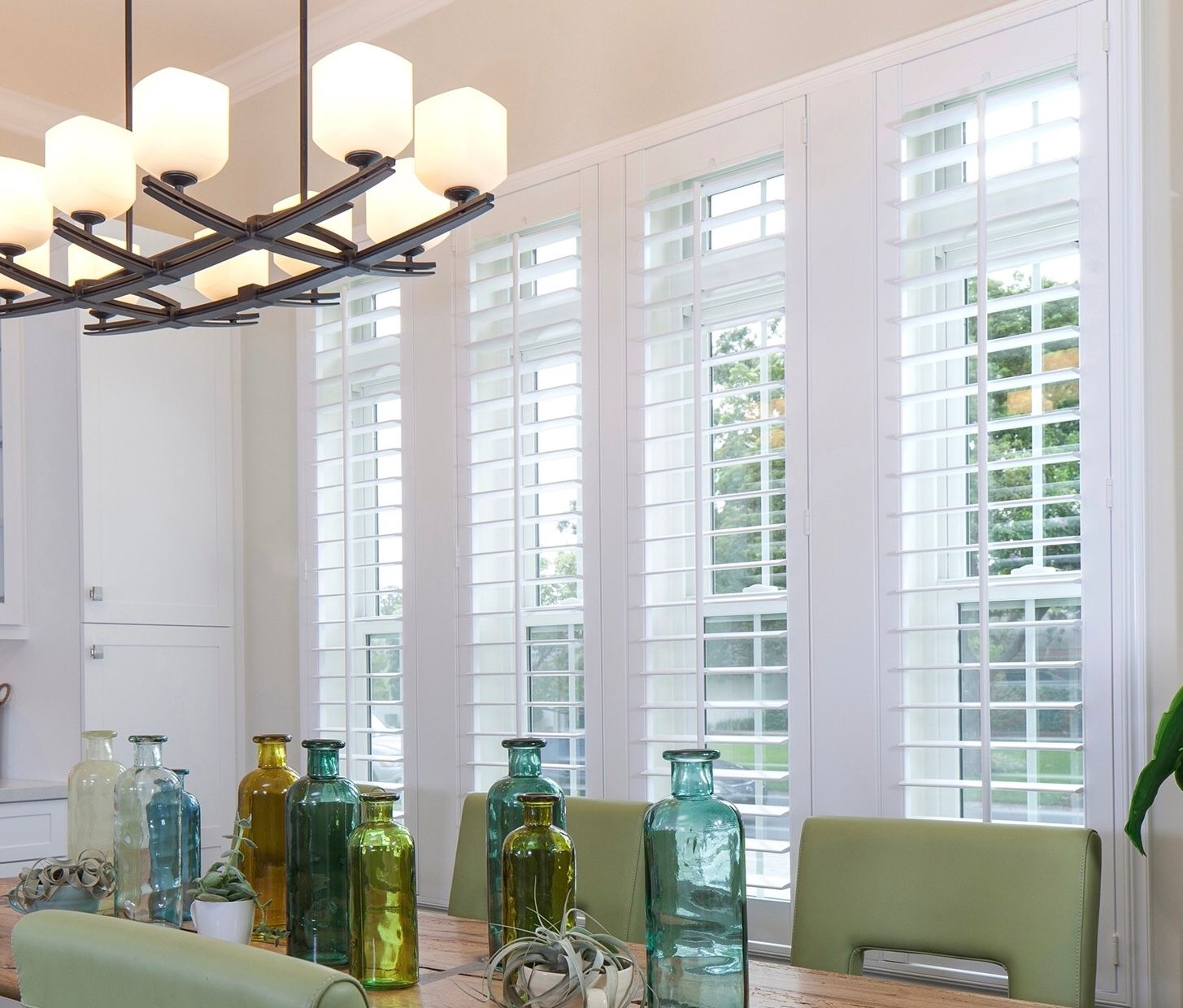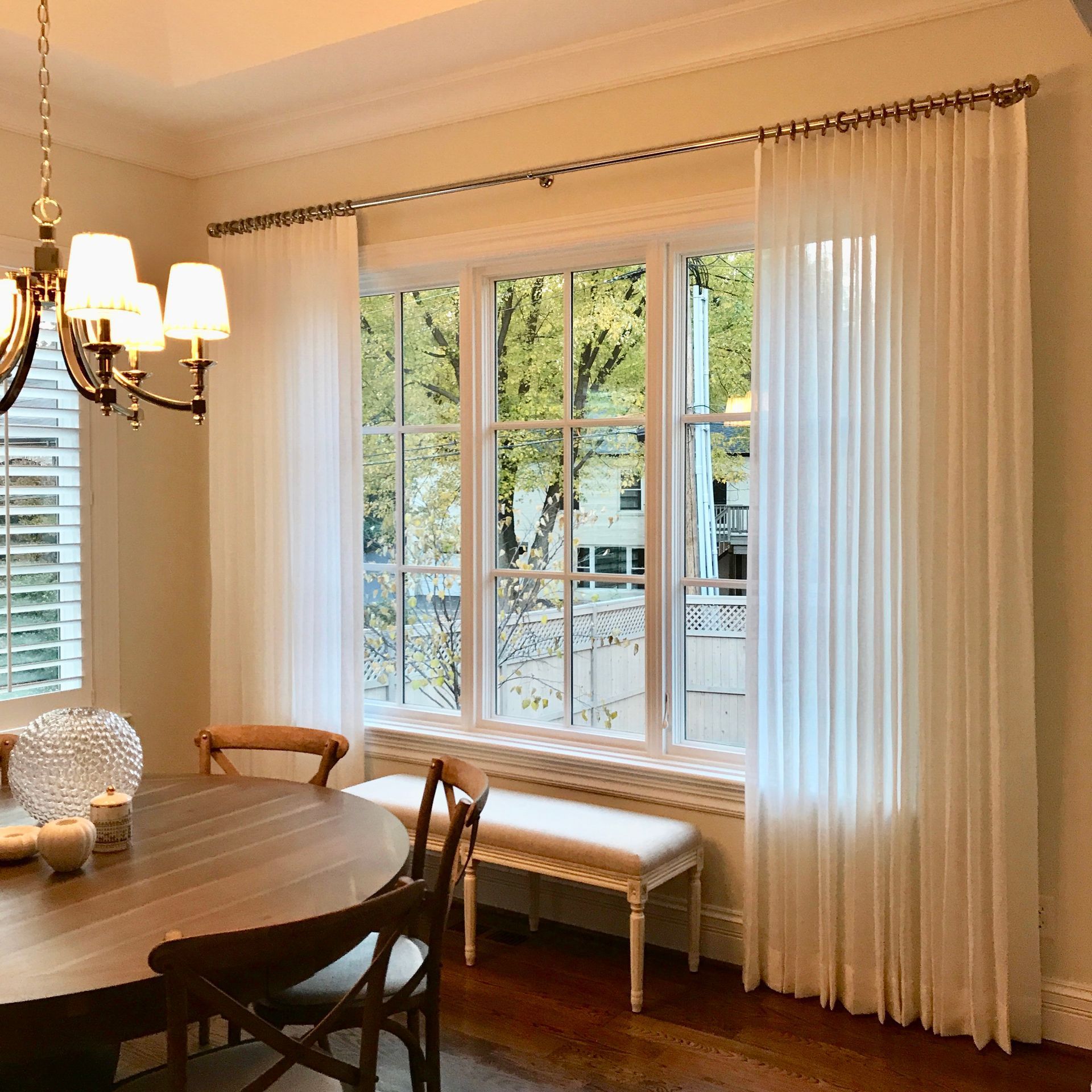New Paragraph
Minimalism, Maximalism, and More: Choosing a Style for Your Window Treatments
July 10, 2024
One of the most fulfilling parts of being a homeowner is seeing the image in your head come to life in your space. That said, creative vision looks different for everyone, and most homeowners are not interior designers. A tried-and-true way to understand what you want your home to look and feel like is to understand basic interior design principles and follow an aesthetic as a template.
In recent years, homeowners have debated minimalism versus maximalism and other design trends. Let's discover different interior design elements and how to choose a style for your home and window treatments.
Minimalism
Minimalism is defined by simplicity, clean lines, and monochromatic palettes. It focuses on functionality and the idea that "less is more." Minimalism had a new wave of popularity among homeowners in the 2010s, and its presence in homes (as well as many retail stores) continues today.
Elements
- Neutral color schemes (white, black, gray)
- Minimal furniture with simple, clean lines
- Open spaces with minimal decor
- Functional and multi-purpose pieces
- Lack of clutter
Advantages
- Creates a clean, clutter-free environment
- Easy to maintain and clean
- Promotes a sense of calm and order
- Timeless and versatile
Disadvantages
- It can feel cold and impersonal if not balanced with warmer elements
- Limited space for personal expression
- Requires discipline to maintain clutter-free
Minimalist Window Treatment Ideas
If you're shooting for a minimalist aesthetic in your home, your window treatments should echo that. You'll want to avoid bold patterns and colors and choose a color that blends with the walls or furniture. You may consider plantation shutters for a clean look. Additionally, motorized shades work well with minimalism, adding function and structure.
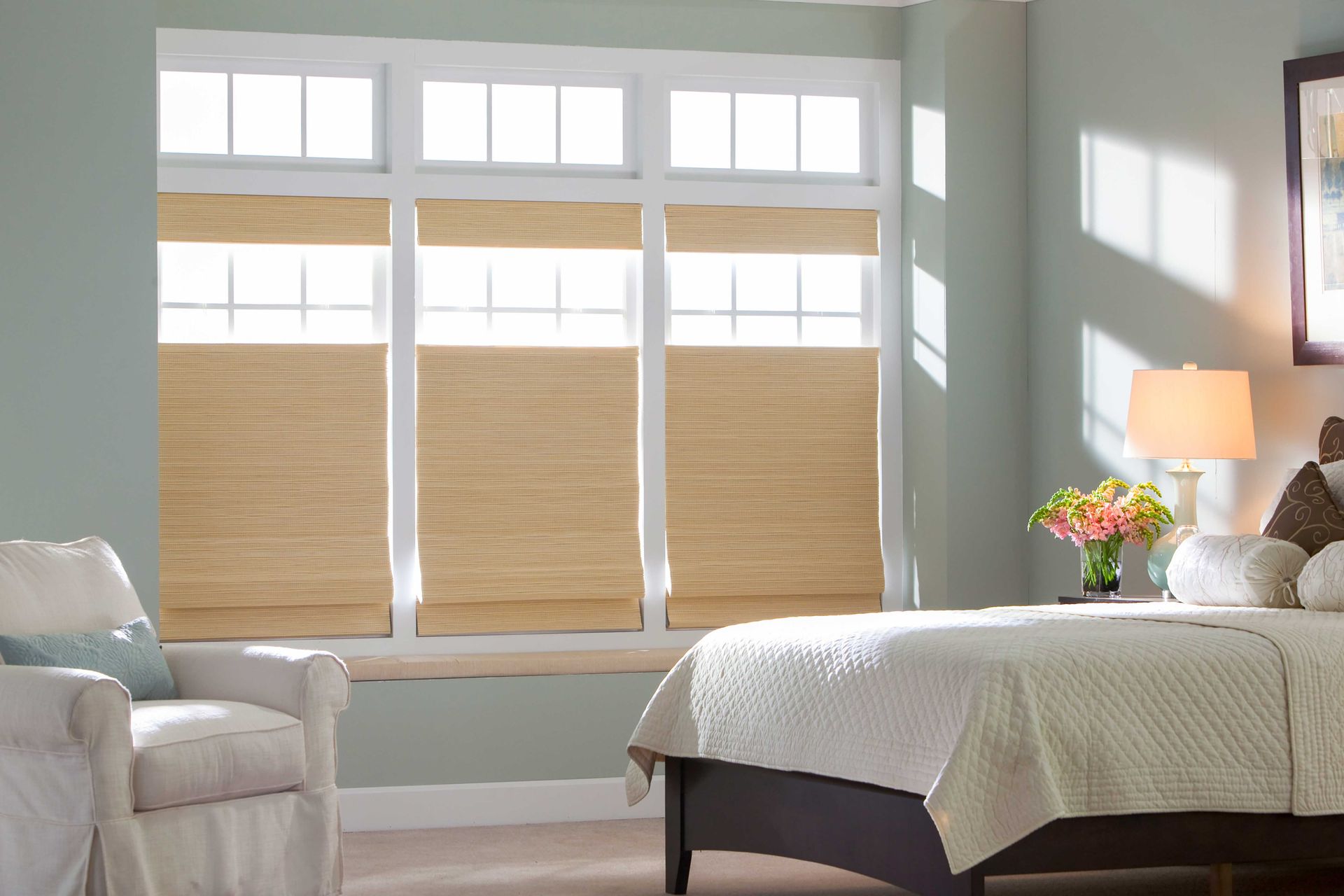
Maximalism
Maximalism is the opposite of minimalism, embracing bold colors, patterns, and an eclectic mix of decor. It celebrates abundance and personal expression.
Elements
- Vibrant color palettes
- Layered textures and patterns
- A diverse mix of furniture and decor styles
- Art and collectibles are displayed prominently
- Rich, detailed fabrics and wallpapers
Advantages
- Allows for strong personal expression
- A rich and visually stimulating environment
- Great for showcasing collections and art
- It can be cozy and inviting
Disadvantages
- It can become overwhelming if not well-curated
- More challenging to keep clean and organized
- Risk of clutter and visual chaos
Maximalism Window Treatment Ideas
If you're following maximalist design principles, you have many options in the world of window treatments. Consider adding patterns and unique textures to drapery. If you prefer blinds or shutters, those could also be in a bold color. Have fun and experiment with different types of window treatments – for maximalists, anything goes!
Scandinavian
Scandinavian design emphasizes simplicity, functionality, and a connection to nature. It combines minimalism with a cozy, inviting atmosphere.
Elements
- Light, neutral color palettes with pops of muted colors
- Natural materials like wood and leather
- Simple, functional furniture with clean lines
- Cozy textiles (wool, sheepskins)
- Lots of natural light and green plants
Advantages
- Creates a warm and inviting environment
- Emphasizes functionality and practicality
- Easy to maintain and clean
- Timeless and versatile
Disadvantages
- It can feel too neutral or bland if not balanced with vibrant accents
- Limited space for bold personal expression
- It may require regular maintenance to keep natural materials in good condition
Scandinavian Window Treatment Ideas
Since Scandinavian designs often highlight natural lighting, ensuring your window treatments have functionality is key. Motorized shades or blinds can help you bring in natural light throughout the day while keeping privacy intact. If you prefer drapery, sheer or lighter material in neutral colors may be the way to go. Overall, keeping your window treatments and furniture simplistic will create the Scandinavian feel you seek.
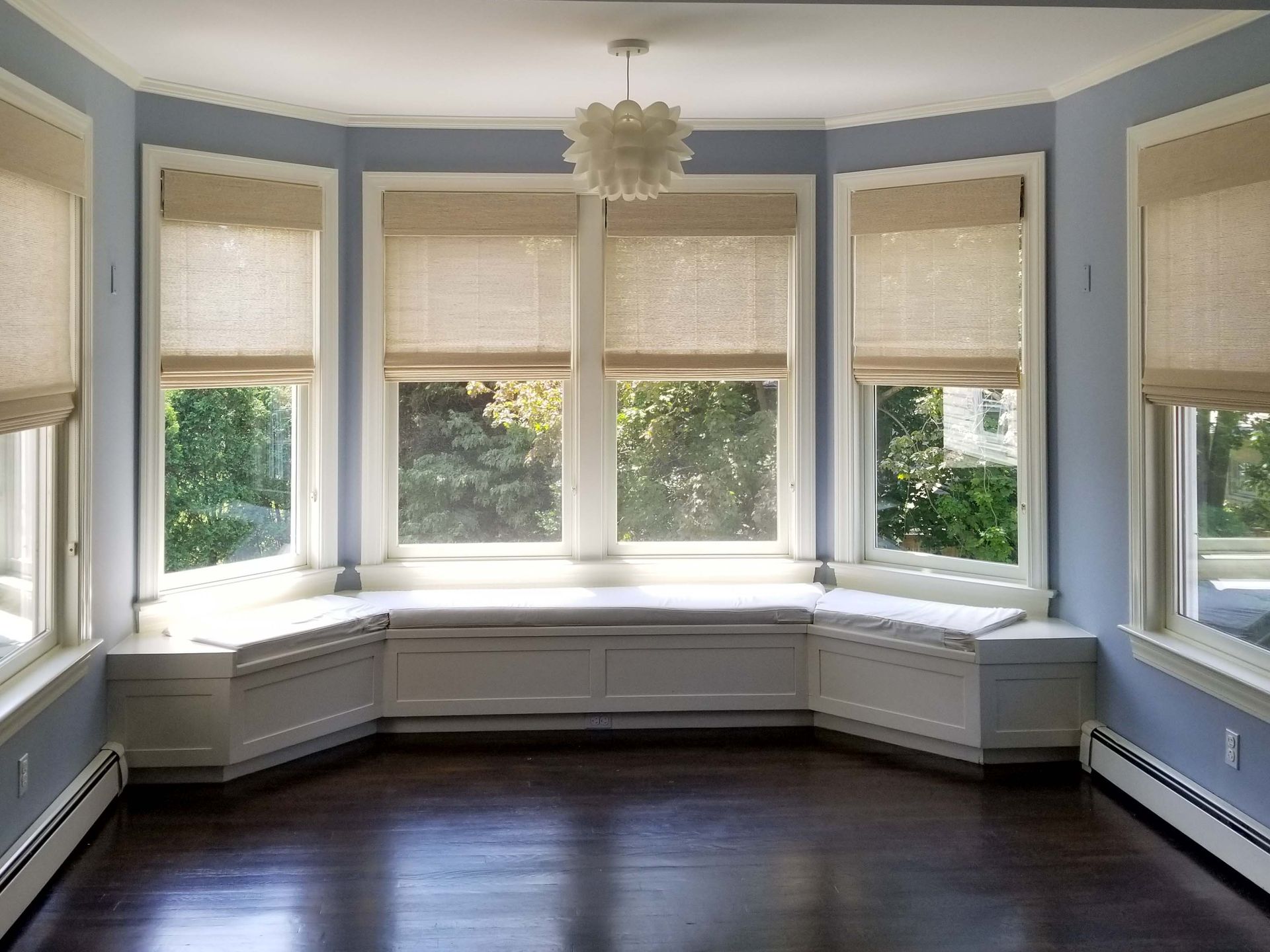
Industrial
Industrial design takes inspiration from factories and urban lofts. It features raw, unfinished elements and a mix of modern and vintage styles.
Elements
- Exposed brick, pipes, and ductwork
- Raw wood and metal surfaces
- Neutral color palettes with grays, blacks, and rustic tones
- Reclaimed wood furniture
- Vintage or factory-inspired decor
Advantages
- Unique, edgy aesthetic
- Durable and practical materials
- Easy to mix with other styles
- Great for open, loft-like spaces
Disadvantages
- It can feel cold or uninviting if not balanced with softer elements
- Limited to specific architectural features (exposed brick, high ceilings)
- It may not suit all homes or tastes
Industrial Window Treatment Ideas
Incorporating an industrial style into your window treatments can feel tricky. When you look up examples of industrial-style homes or apartments, windows are often entirely exposed and may span from floor to ceiling. However, if you want to incorporate window treatments, consider materials that will echo the aesthetic. Dark wooden blinds or simple shutters could accomplish the task.
Bohemian (Boho)
Bohemian style is all about individuality and eclecticism. It embraces a mix of textures, patterns, and colors from various cultures and eras.
Elements
- Vibrant, earthy color palettes
- Layered textiles (rugs, throws, pillows)
- An eclectic mix of furniture and decor
- Plants and natural elements
- Handcrafted and artisanal items
Advantages
- Strong personal expression and creativity
- Warm, inviting, and cozy environment
- Great for showcasing travel souvenirs and eclectic collections
- Flexible and adaptable to different spaces
Disadvantages
- It can become cluttered or chaotic if not carefully curated
- Requires a keen eye to mix and match elements effectively
- It may be overwhelming for those who prefer a more subdued aesthetic
Bohemian Window Treatment Ideas
Like maximalism, bohemian design opens up many ways for creative window treatments. You can incorporate many textures, patterns, and colors in your shutters, drapery, and blinds when aiming for a bohemian feel. Consider looking into earthy tones or woven material to add a natural feel.
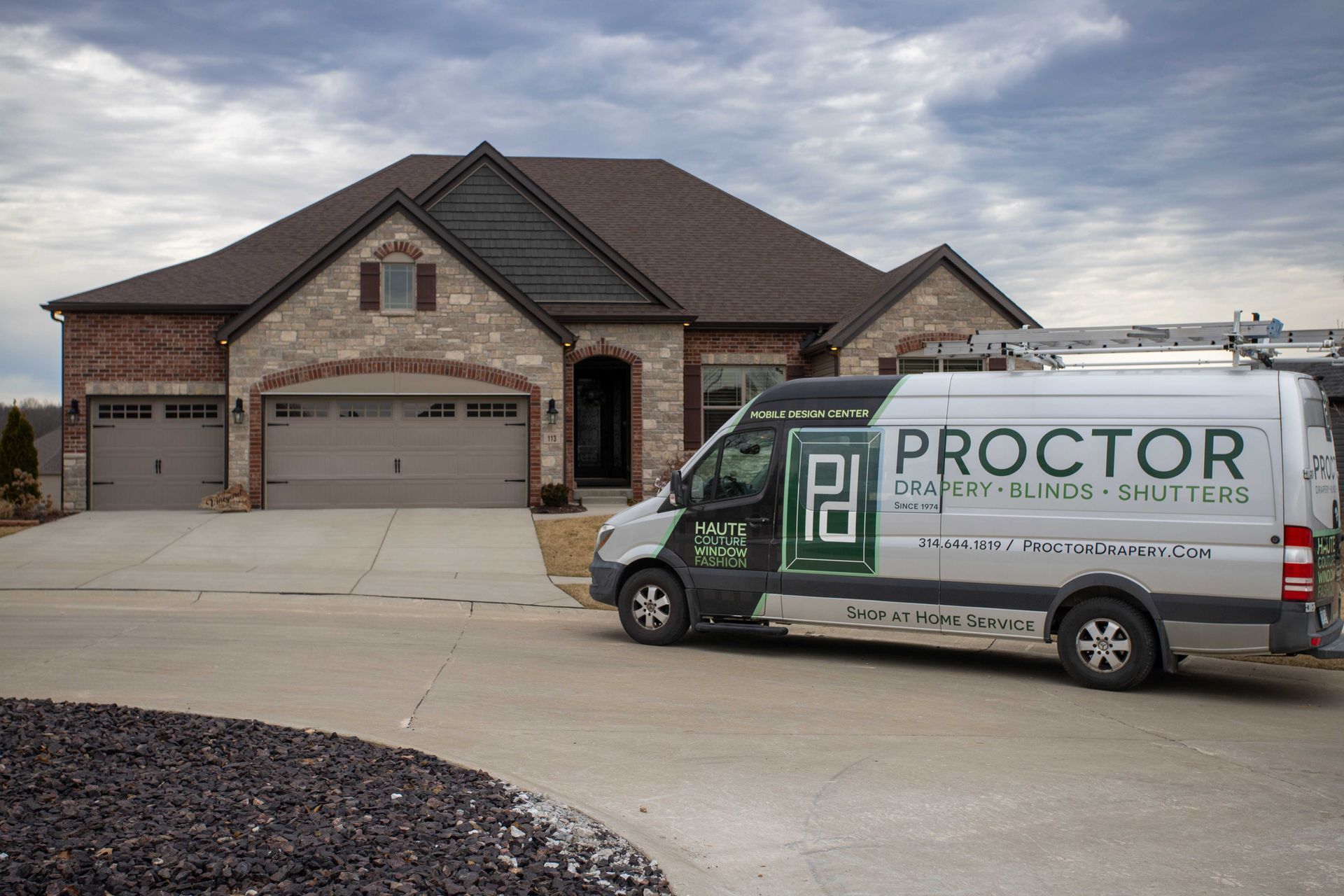
Work With Proctor Drapery and Blinds
Choosing the right interior design aesthetic for your home depends on your personal preferences, lifestyle, and the specific characteristics of your space. Whatever aesthetic you choose, understanding these approaches allows homeowners to create homes and window treatments that reflect their personality and meet their functional needs.
At Proctor Drapery, we believe in the power of personalized service and collaboration. Michael Proctor is our Window Design Specialist with 50 years of experience. He knows this business inside and out and is ready to work directly with homeowners, interior designers, and property managers from the initial concept to the completion of your next project.
Contact us today if you're looking for custom drapery, blinds, shutters, and more in Greater STL!
